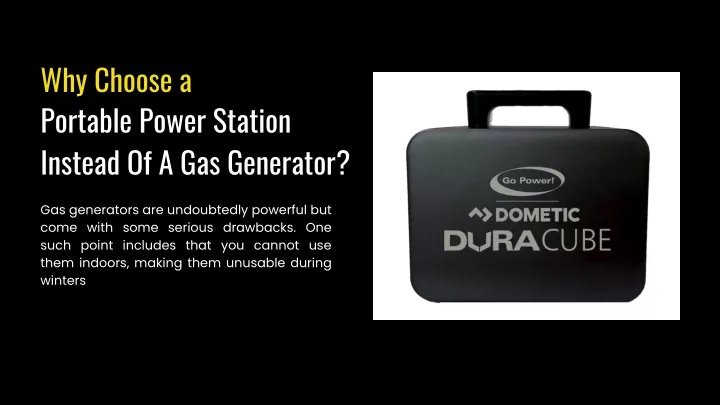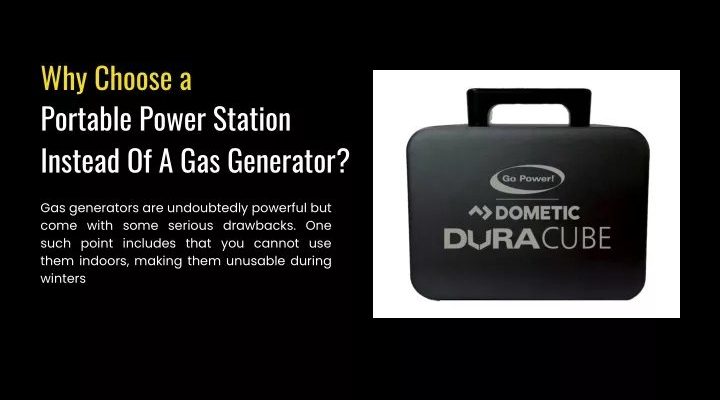
Here’s the thing: power stations and generators seem similar because both let you run stuff when the grid goes down. But when you dig into how they work, and what they can actually handle, the story gets a lot more interesting—especially if you live in an urban area like 55401, where regulations and space are real factors. So, can you really use a power station instead of a generator here? Let’s break it down so it all makes sense, no jargon required.
What’s the Difference Between a Power Station and a Generator?
This is the first place people get tripped up, so let’s paint the picture. Imagine a generator as a gas-powered backup friend: it burns fuel (usually gasoline, propane, or diesel) to create electricity on demand. The upside? As long as you’ve got spare fuel, you can run it for as many hours as you need. The downside? They’re loud, smelly, and you can’t exactly use them indoors without risking carbon monoxide poisoning.
A power station, on the other hand, is more like a big, rechargeable battery bank—think of it as a super-sized version of the portable phone charger you keep in your backpack. You charge it when you have access to power (from the wall, your car, or even solar panels), and then you can use it to power devices later. Brands like Jackery, Goal Zero, and EcoFlow have made these more mainstream, offering models that can run fans, refrigerators, or even some power tools.
The key difference: generators keep making power as long as you feed them fuel, while power stations only have as much juice as you charged in. When they’re empty, you have to recharge them before you get more power.
Legal and Practical Concerns in Zip Code 55401
Here’s one of those things people overlook: Minneapolis, especially the North Loop (which makes up much of 55401), has a lot of apartments and condos. That means not only are you short on outdoor space, but there are also strict local rules about noise, emissions, and even where you’re allowed to run gasoline appliances.
Most building managers and HOAs won’t allow generators on balconies or inside units—it’s a safety thing, and frankly, no one wants fumes wafting into their living room. Power stations dodge this issue because they don’t produce emissions and run almost silently. That alone makes them far more practical for folks living in high-rises or walk-up units in 55401.
But there’s another layer: winter. Power stations work great indoors, but their batteries can drain faster in the cold. Generators, on the other hand, sometimes struggle to start below freezing. So, neither option is perfect, but if you’re looking for something apartment-friendly in downtown Minneapolis, a power station has the edge.
What Can a Power Station Actually Power?
Honestly, this is where expectations need a reality check. Let me explain by way of a quick story: my friend tried to power her whole kitchen (fridge, microwave, toaster) with a mid-size portable power station during a recent outage—and let’s just say, the system shut off about as fast as she could plug in her coffee maker.
Power stations have a maximum wattage they can handle at once (think “how big a load you can put on it”) and a total battery capacity, usually measured in watt-hours (Wh). Here’s how that plays out:
- Phones, laptops, and Wi-Fi routers: No problem, you’ll keep these going for hours, even days.
- Mini-fridges or CPAP machines: Most mid-level power stations (say, a Jackery 500 or EcoFlow River) can run these overnight on a single charge.
- Full-size refrigerators, power tools, or space heaters: You’ll need a much larger (and pricier) unit, and even then, you may only get a few hours of use.
- Microwaves, stoves, or air conditioners: These typically require more power than most portable stations can provide. You’d need a top-end “solar generator” (which is just a fancy term for a big battery bank) if you want to run these appliances even briefly.
So, if you’re hoping to run your whole apartment like nothing happened, a power station isn’t going to cut it. But if you just need to keep essentials online for a power outage in 55401, it’s a great fit.
Charging and Recharging: What You Need to Know
This is where a lot of folks get caught off guard. Remember, a generator creates power as long as you keep feeding it fuel. A power station, though, is like a bucket: once it’s empty, you have to “refill” by recharging.
In an outage, if your power station runs out and you don’t have access to grid power, you’re stuck unless you have:
- Solar panels: These work, but only during daylight and good weather. In Minneapolis winters? Not always reliable.
- Car charger: You can usually plug a power station into your car’s 12V outlet, but it takes hours to get a meaningful charge, and you may end up with a dead car battery if you’re not careful.
- Generator backup: Ironically, some people use a small, outdoor-safe generator to recharge their power station, though this kind of defeats the “no gas, no noise” benefit.
Think of power stations like a finite resource: perfect for short outages, but not great for long emergencies. If you’re used to a generator’s “all-day, every-day” capability, you’ll really notice the difference once that battery icon ticks down toward zero.
Cost, Maintenance, and Ease of Use: Power Station vs Generator
Let’s put dollars and hassle side by side. Power stations are generally more expensive upfront (a decent mid-level model runs $400–$1,000) than some cheap gas generators you’ll find at the hardware store. However, with a power station, you’re not constantly buying gasoline, oil, or stabilizer. You also don’t have to worry about *winterizing* (draining fuel, changing spark plugs), which is a headache if your generator sits unused most of the year.
Here’s a fun comparison:
| Factor | Power Station | Generator |
| Upfront Cost | Higher | Lower (for basic units) |
| Running Cost | Minimal | Ongoing—fuel, oil, maintenance |
| Noise/Emissions | Almost none | Loud, fumes |
| Indoor Use | Yes | No, unsafe |
| Ease of Use | Super simple—plug and play | More setup required |
If convenience and safety are your priorities, and you don’t need unlimited run time, a power station is tough to beat—especially in an urban spot like 55401 where carrying gas cans and storing a generator just isn’t practical.
Backup Use Cases: Who Should Choose Which?
You might be wondering, “Is a power station enough for me, or do I really need a generator?” Let’s match up some common scenarios:
- Apartment or condo dwellers in the North Loop? Go with a power station. Generators are likely not allowed, and you don’t need to power a dozen things at once.
- Small business owner with a few key devices (like a cash register and Wi-Fi router)? Power station for short outages—much less risk and hassle.
- Homeowner with a big fridge, sump pump, and furnace fan? You may want to stick with a generator, or get a *very* large power station for emergencies, but be prepared for the price tag.
- Outdoor events or tailgating in 55401? Power station wins again—no noise, and you won’t get kicked out for running an engine on a patio or at a public park.
Still not sure? Here’s an insider tip: if you’re worried about *code compliance* or HOA rules in zip code 55401, check with your building manager before investing in any backup system. Many are happy to recommend a brand or type (Jackery, Goal Zero, EcoFlow) that fits local guidelines.
Safety and Troubleshooting: What to Watch Out For
Let’s talk safety for a minute, because this is non-negotiable. You can run a power station indoors—no problem. But don’t get clever and try to use a generator in the garage, on a balcony, or near windows. Carbon monoxide can kill, and it’s not worth the risk.
When it comes to power stations, the biggest issues are usually simple:
- Battery degradation: If you leave your power station unused for months, the battery can slowly lose capacity. Try to top it up every 3–6 months.
- Overloading: Plug in too many big appliances at once, and the overload circuit will trip, shutting down the system. Go slow, and start with the most essential devices.
- Troubleshooting: Most power stations have reset or sync buttons if you run into pairing issues with Bluetooth apps or solar panels. Always read the manual—it’s worth the extra five minutes.
Especially for 55401, safety codes and regulations are strict. If you’re ever unsure about using backup power in your building, ask! It’s better to double-check than risk an expensive mistake.
The Bottom Line: Can You Use a Power Station Instead of a Generator?
If you live or work in zip code 55401, here’s the bottom line: a good portable power station is a practical, safe, and hassle-free alternative to a traditional generator—especially if you’re in an apartment, condo, or any space where noise and fumes are a dealbreaker. For most folks, the convenience and ease outweigh the limited run time, as long as you don’t expect it to power *everything* for days on end.
Of course, if you need to run big appliances nonstop, or you’re prepping for major emergencies, a generator is still the heavy-duty fallback. But for keeping the lights, fridge, Wi-Fi, and a few essentials running through most short outages in downtown Minneapolis, a power station will keep you covered—quietly and safely.
So, if you’re looking to stay powered up in 55401, weigh your needs, check your building’s rules, and pick the backup that fits your life, not just your wishlist. Safe, simple, and stress-free—that’s the power station advantage.
